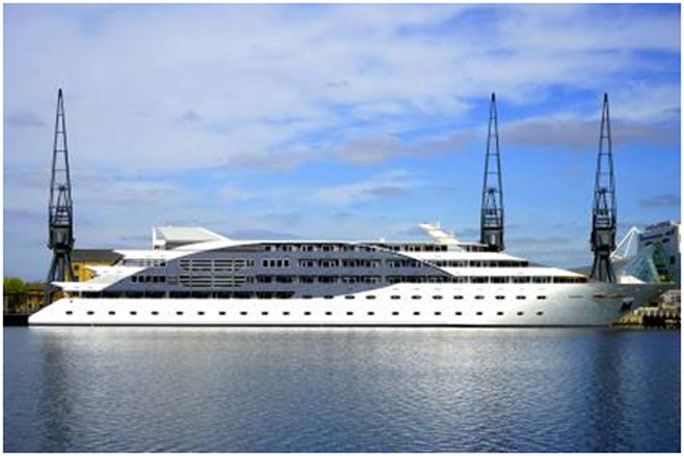
Some high schools have begun to offer courses for those interested in maritime transportation careers. At this point in time, most tend to be marine science offerings; however, at least two schools offer excellent maritime studies programs. The Randal Aerospace and Marine Science High School in Washington, DC, offers courses in basic seamanship. These are taught in conjunction with the harbor police and include boating, navigation, "rules of the road," boat maintenance, and some maritime law. In the marine engineering course, students are introduced to the maintenance of marine engines, specifically the 671 GM Diesel Generator, while learning the use of basic hand tools and principles of preventive maintenance. Upon graduation, many of the students obtain jobs in marine and maritime industries. Dr. Richard Odgomy, program director, reports that graduates enter such careers as marina steward, fireboat firefighter, deckhand, the Navy, sailing instructor, lifeguard, crabbing and fishing apprentice, yacht basin service station attendant, marine engine mechanic's helper, boatbuilding, and clerical positions in government agencies. Their salaries were significantly higher than the average for all high school graduates. The student population is divided almost equally between men and women.
Several colleges now offer courses for prospective sailors, and the list is growing. Typical of these institutions is Leeward Com-munity College in Hawaii, which provides such courses as advanced seamanship, basic seamanship and marine orientation, and practical shipboard operation. To locate colleges with maritime offerings in your area, work with your school counselor and use college guidebooks. Several programs exist in community colleges.
Fire is the greatest safety hazard aboard ship, and modern marine technology has resulted in new and different situations in which fires can break out. Mariners have limited options in the event of a fire-they cannot simply walk away from the flames to safety. The potential disaster to human life, the cargo, and the multimillion dollar ship is great. Training for prevention of fire-related tragedies is a must.
The preceding example is just one illustration of the importance of professional training for a maritime career. Few opportunities remain for the unskilled in today's merchant marine; fortunately, several schools and programs exist for this purpose. More important, every person employed aboard an oceangoing or coastal United States vessel of one hundred or more gross tons must obtain a United States merchant mariner's document issued by the Coast Guard. Application for the certificate must be endorsed by a recognized maritime school or by a letter of commitment from a shipping company. Today, few companies make such a commitment. Coast Guard or naval experience also meets this requirement.
One of the best known professional schools in the industry is the Seafarers Harry Lundeberg School of Seamanship (SHLSS). At this tuition-free school, training is provided in entry or beginning job skills, upgrading to licensed or unlicensed ratings, and specialized, advanced courses. The school focuses its program in three key areas:
- Providing young men and women who have no maritime experience with the basic skills they will need to serve aboard U.S. flagships or tugs and towboats,
- Providing professional advancement for experienced men and women through career upgrading programs, and
- Providing the academic education that is an essential complement to the modern technical skills in today's water transport industries.
Part of the curriculum involves training aboard ship. The program includes courses such as the following for each trainee:
Vessel familiarization
This course is designed to acquaint students with basic seamanship skills and shipboard terminology. Students learn marlinspike seamanship and cargo handling applicable to ocean and inland waters. Safety, watch standing duties and work routines also are taught. On-the-job training takes place on the school's ships and tugs.
Lifeboat / water survival
This course of instruction leading to a life boatman certification consists of classroom work and practical training. Subjects taught include emergency drills, lifeboat launching and recovery, lifeboat construction, basic compass navigation, life raft construction, life raft launching and maintenance, and use of all lifeboat and life raft equipment.
The SHLSS offers numerous courses for seamen to upgrade and improve their skills. In the engine department, course work may be taken to obtain an endorsement as fireman/water tender. In the deck department, upgrading courses carry titles such as quartermaster, radar observer, and deep-sea deck ship handling simulator. Cook and baker, chief cook, and chief steward are some of the advanced courses in the steward department.
Another fine training program is the National Maritime Union (NMU) Upgrading and Retraining Plan. The purpose of the program is "to provide experienced deck and engine department seamen with training in the new skills, knowledge, and techniques required on automated ships." The program also provides training in shipboard service and food preparation, as well as efficient management in the steward's department. The basic program is fifteen weeks long with specialization taking up to twenty-one weeks. The program is designed for NMU members, not for those just beginning a maritime career. Travel expenses, board, and a stipend are provided. For further information write the NMU:
A variety of other programs exist in the maritime field. The Franklin D. Roosevelt Institute of the Seamen's Church Institute of New York offers as one of its programs a Certificate Program in Maritime Transportation. The program involves six courses, including Modern Ocean Transportation, Maritime Law, and Container Control, and Terminal Operations.
See the following articles for more information:
- Find Your Calling: A Checklist
- 5 Ways To Build Your Career Outside of the Office
- How To Impress Your Interviewer When Making a Career Change
- 5 Tips For Successful Networking
